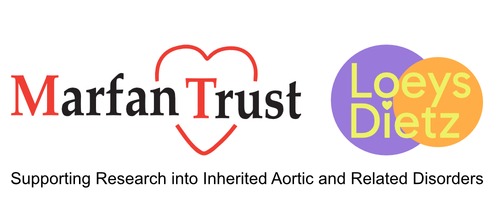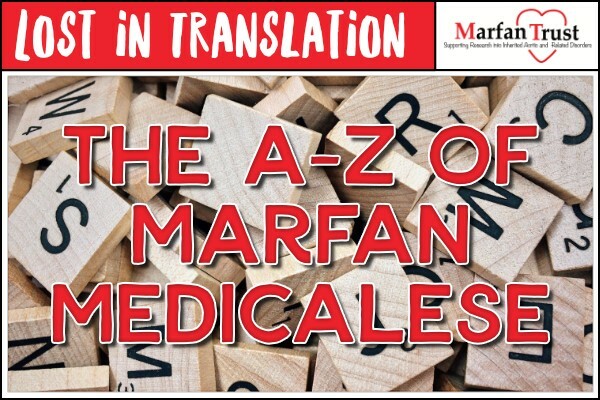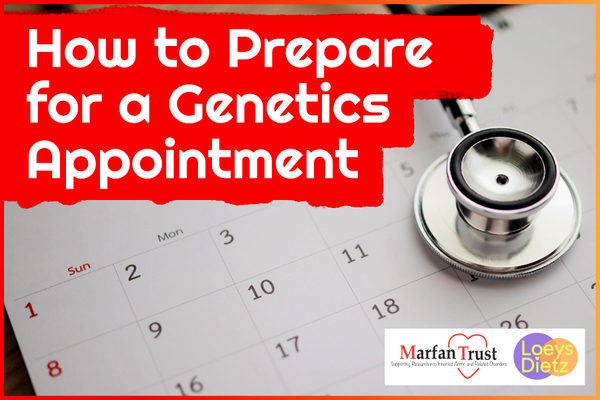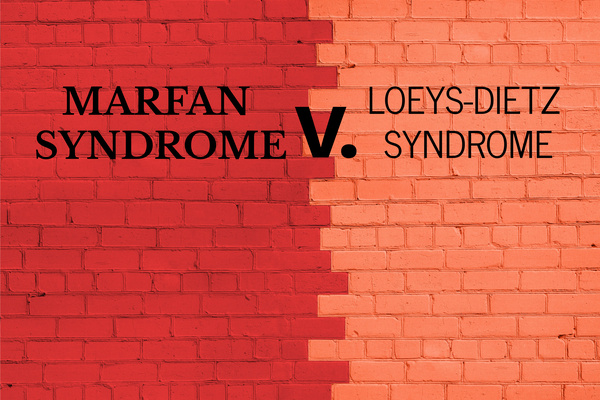Words open worlds! Every vocation gives rise to its own vocabulary, every job has its own jargon and every profession its own patois. Here we hope to open up and demystify the world of Marfan medicalese with this one-stop glossary
Please feel free to add anything we’ve missed and perhaps some made-up medicalese of your own?
Marfan Syndrome ….
Marfan: In 1896, Antoine Marfan described a hereditary disorder of connective tissue that was to become known as Marfan syndrome.
He wrote in the "Bulletin of the Medical Society of Paris", of a five-year-old girl with arachnodactyly (spider fingers) who, ironically, is now believed not to have had Marfan syndrome.
Syndrome: a group of signs and symptoms which frequently occur together, or a condition characterized by a set of associated symptoms, which lead to a diagnosis.
Acetabulum is the socket that receives the femoral head to make the hip joint.
Amblyopia is an imbalance of vision where one eye sees better than the other. If not corrected, the brain may stop registering vision from the weaker eye.
Angiotensin Receptor Blockers (ARBs) are a group of medications (including Losartan and Irbesartan) that are used in the treatment of high blood pressure and heart failure. Research has also shown they are beneficial in reducing the rate of aortic enlargement and they are therefore commonly prescribed to children and adults with Marfan syndrome or related genetic conditions causing aortic dilatation.
Aneurysm a ballooning or widening at a weakened point of a blood vessel.
Anticoagulant a drug used to thin blood and prevent clotting.
Aorta the main artery that carries oxygenated blood away from your heart to the rest of your body.
Aortic Root earliest part of the aorta as it leaves the heart; it contains the aortic valve.
Aortic Aneurysm a ballooning or widening at a weakened point in the aorta. In people who have Marfan syndrome, this is most likely to happen at the aortic root — where the aorta leaves your heart but they can occur at any point in the aorta
Aortic Dilation generalised enlargement of the aorta.
Aortic Dissection the wall of the aorta is made up of layers. Dissection occurs in MFS usually at the root when a small tear in the innermost layer of the aorta's wall allows blood to squeeze in between the inner and outer layers of the wall. This can cause severe pain in the chest or back. An aortic dissection weakens the vessel's structure and can result in a rupture, which may be fatal.
Aortic Valve one of the four valves in the heart, it has three leaflets (or cusps) that open and close to allow blood to pass from the left ventricle into the aorta.
Aortic Valve Insufficiency (AI) or Aortic Valve Regurgitation (AR): refers to backwards flow through an aortic valve that doesn't close properly and allows blood to leak back from the aorta into the left ventricle.
Aortopathy refers to a disease of the aorta, the largest blood vessel in the body which carries oxygenated blood from the heart to the rest of the body. Aortopathy includes aortic enlargement and acute aortic dissection.
Aphakia means not having a lens inside your eye. The lens is the clear, oval-shaped structure behind the iris (colored part of your eye) and pupil. It focuses light rays on the retina. Without a lens, the eye is out of focus and vision is blurry. It can be corrected by wearing glasses, contact lenses or artificial lens implantation.
Arachnodactyly “spider fingers” fingers and toes are abnormally long and slender, in comparison to the palm of the hand and arch of the foot. Also, the individual's thumbs tend to be pulled inwards towards the palm.
Astigmatism blurred vision caused by an asymmetric curve of either the lens or the cornea.
Autosomal Dominant a pattern of inheritance in which a gene is passed directly from a parent to a child with a 50/50 chance of inheritance.
Bentall Operation is a type of aortic surgery that replaces a damaged portion of the aorta and the aortic valve. The dilated aorta and aortic valve are removed and a composite graft, usually including a mechanical aortic valve replacement is implanted, the coronary arteries are reattached. Following this type of surgery anticoagulant medication is required for life to prevent clot formation on the mechanical valve replacement.
Bicuspid aortic valve aortic valve that only has two flaps instead of the normal three.
Bradycardia a slower than normal heart rate.
Cardiomyopathy is a disease of the heart muscle that affects the structure of the heart and makes it harder for the heart to pump blood around the body. There are different types of cardiomyopathy, the walls of the heart chambers can become stretched, thickened or stiff. Cardiomyopathy can lead to heart failure.
Cardiologist a medical doctor who specializes in the heart and blood vessels.
Chromosome a structure found in the cell nucleus that contains genes; chromosomes are composed of DNA and are found as pairs in each cell. Each parent contributes one chromosome to each pair, so every child gets half of his/her chromosomes from the mother and half from the father.
Contracture deformity Dupuytrens contracture is a progressive hand condition where a thickening of the underlying fibrous tissues of the palm pull the fingers toward the palm. Treatment involves steroid injections or surgical lengthening of the tendon sheath. Contractures can also affect other joints especially toes.
Collagen is a protein component of connective tissue which provides strength and stretch. Its many different types are found in skins, tendon, bones and ligaments.
Cornea the clear outer layer at the front of the eye. The cornea helps the eye to focus light so one can see clearly.
Craniosynostosis is a rare condition in which a baby's skull does not grow properly due to premature fusion of the skull bones. If severe it may require surgical correction.
CT scan (computed tomography) combines a series of X-ray images taken from different angles and uses computer processing to produce detailed, cross-sectional images (slices) of the bones, blood vessels and soft tissues inside your body.
David Procedure is a type of valve sparing aortic root surgery performed to replace a part of the aorta. If the aortic root (the part of the aorta that connects to the left ventricle of the heart) is widened or dilated it can stretch the aortic valve so it becomes leaky and the aorta can also be at risk of tearing. In the David procedure, the damaged part of the aorta is cut away and replaced with a fabric graft. Your own (native) aortic valve is kept and repaired if necessary. The aortic graft is reattached to the left ventricle and the ascending aorta. One of the advantages of this surgery is that anticoagulation medications will not be needed.
Diagnosis determination of the nature of a disease.
DNA (deoxyribonucleic acid) a molecule used to make genes that tell our body how to grow and develop.
Dura the central nervous system – the brain and spinal cord – are surrounded by fluid contained in a membrane called the dura which is primarily made up of connective tissue.
Dural Ectasia the enlargement of the Dura (sometimes associated with the presence of cysts) is referred to as dural ectasia. It can cause radicular pain in the buttocks and legs; nerve root paralysis affecting bowel and bladder function and motor function in the legs; and dull, unremitting discomfort in the lower abdomen and pelvis. Occurs in 63–92% of people with Marfan syndrome. Dural ectasia may also occur in Ehlers-Danlos Syndrome, neurofibromatosis type I, ankylosing spondylitis, and trauma.
Echocardiogram an ultrasound scan of the heart and large vessels nearby. Gel will be placed on the chest and an ultrasound probe is moved around the chest to obtain the images. It requires the patient to lie quietly, usually for 20-30 minutes. It can give useful information about the function of the heart muscle, the heart valves and the size of the aortic root and ascending aorta (the parts of the aorta closest to the heart).
Ectopia Lentis dislocation of the crystalline lens of the eye.
Ehlers-Danlos Syndrome this group of inherited disorders affects connective tissues throughout the body, with symptoms most typically present in the joints, skin, and blood vessels.
Endocarditis is inflammation of the inner lining of the heart, called the endocardium, this includes the inside of the heart chambers and the heart valves. It is a serious condition usually caused by bacterial infection. You are at more risk of developing endocarditis if you have a damaged heart valve or an artificial heart valve.
Endocarditis prophylaxis the taking of antibiotics to prevent endocarditis prior to any procedure that is likely to release harmful bacteria into the blood stream. If you are at risk of endocarditis you should be given a warning card by your doctor and advised what procedures need to be done with antibiotic protection.
Fibrillin-1 a protein fibre of the connective tissue. Mutations in the fibrillin-1 (FBN1) gene, on chromosome 15q21. 1, have been found to cause Marfan syndrome, a dominantly inherited disorder characterised by clinically variable skeletal, ocular, and cardiovascular abnormalities.
Gene a specific sequence of DNA located on a chromosome that creates a protein to perform a specific function in the body.
Geneticist a doctor who specialises in diagnosis and management of heritable conditions.
Genome the complete gene complement of an organism contained in the chromosomes.
Genotype the genetic makeup of a cell or individual.
Haptic a flexible, looping extension attached to an artificial intraocular lens that stabilizes and centers it within the eye.
Haemopericardium blood in the pericardial sac of the heart. It is clinically similar to a pericardial effusion.
Heritable a feature or condition which can be transmitted from parent to child.
Hernia protrusion of an organ or body part through a hole in the skin or connective tissue.
Holter Monitor a type of portable electrocardiogram (ECG). It records the electrical activity of the heart continuously over 24 hours or longer while you are away from the doctor's office.
Homograft is a tissue graft from a human donor. This usually refers to valve replacement.
Homocystinuria a recessively inherited metabolic disorder that affects the body’s ability to properly process amino acids (the building blocks of proteins). This defect leads to disorders of the connective tissue, muscles, heart and blood vessels, and the central nervous system. Dislocated lenses can be a feature.
Iris the round coloured part of a person’s eye, with an adjustable circular opening (pupil) in the centre it controls the amount of light that enters the eye by opening and closing the pupil.
Kyphosis is a spinal disorder in which an excessive outward curve of the spine results in an abnormal rounding of the upper back. The condition is sometimes known as "roundback" or—in the case of a severe curve—as "hunchback”.
Loeys-Dietz syndrome (LDS) is a connective tissue disorder first described in 2005 by Professor Bart Loeys and Professor Harry Dietz. It is caused by a variant in one of the genes in the TGF-beta pathway- the genes that can cause LDS are TGFBR1, TGFBR2, SMAD3, TGFB3 and TGFB2.
Magnetic Resonance Imaging (MRI) an imaging technique using magnetic fields and radiowaves (no radiation is used) to produce detailed images of internal structures of the body.
Malocclusion poor positioning or inappropriate contact between teeth when the mouth is closed.
Marfanoid habitus a condition in which a person has the skeletal features of Marfan syndrome but doesn’t have any aortic or eye features.
MASS Phenotype a connective tissue disorder similar to Marfan syndrome; MASS stands for the Mitral valve, Aorta, Skin and Skeletal features of this disorder.
Metatarsalgia pain and tenderness in the forefoot.
Microfibril tiny microscopic rod-like structures composed of proteins, including fibrillin-1, that form the framework of the elastic fibers in connective tissue.
Mitochondria the “energy factory” of our body. Several thousand mitochondria are in nearly every cell in the body. Their job is to process oxygen and convert substances from the foods we eat into energy.
Mitral regurgitation the back flow of blood from the left ventricle to the left atrium of the heart through an abnormal mitral valve. Also know as mitral valve incompetence.
Mitral Valve is the heart valve that sits between the left atrium and the left ventricle. It has two cusps that close to prevent blood flowing the wrong way (back into the left atrium)
Mutation a permanent structural change in DNA that can cause a condition.
Myocarditis inflammation of the heart muscle.
Myopia short-sightedness meaning you cannot see objects far away clearly. It is caused by a refractive error when your eye focuses light in front of your retina instead of onto it.
Nuss Procedure is one of two common surgical procedures to repair pectus excavatum are known by the names of the surgeons who first developed them. This minimally invasive procedure uses small incisions placed on each side of the chest. Long-handled tools and a narrow fiber-optic camera are inserted through the incisions. A curved metal bar is threaded under the depressed breastbone, to raise it into a more normal position. In some cases, more than one bar is used. The bars are removed after two or three year.
PEARS (personalised external aortic root support) is another surgical technique designed to manage aortic dilation in people with Marfan syndrome and related genetic conditions. The ExoVasc® (personalised mesh sleeve) is placed around the enlarged ascending aorta where it provides support to the patient’s own aorta and aortic valve and is designed to prevent enlargement and rupture.
Pectus carinatum a rare chest wall deformity that causes the breastbone to push outward instead of being flush against the chest. It is also known as pigeon chest.
Pectus excavatum a condition in which a person's breastbone is depressed or concave in the chest. Severe cases of pectus excavatum can eventually interfere with the function of the heart and lungs.
Pericardial effusion is the buildup of too much fluid in the double-layered, saclike structure around the heart (pericardium).
Pericardium two thin layers of a sac-like tissue that surround the heart, hold it in place and help it work.
Pericarditis refers to inflammation of the pericardium, the outer lining of the heart.
Peripheral neuropathy is a result of damage to the nerves located outside the brain and spinal cord (peripheral nerves), often causes weakness, numbness and pain, usually in the hands and feet. It can also affect other areas and body functions including digestion, urination and circulation.
Pes planus known as flat feet is a relatively common foot deformity and is defined by the loss of the medial longitudinal arch of the foot where it contacts or nearly contacts the ground.
Phenotype an individual's observable traits, such as body build, height, eye colour, and blood type. The genetic contribution to the phenotype is called the genotype.
Pneumothorax a pneumothorax occurs when air gets into the space between the outside of your lung and the inside of your chest wall, your ribcage. In MFS there are several respiratory manifestations, with spontaneous pneumothorax being common.
POTS (Postural Orthostatic Tachycardia Syndrome) an abnormal increase in heart rate that occurs after sitting up or standing. Some typical symptoms include dizziness and fainting.
Protrusio Acetabuli is an uncommon defect of the acetabulum, the socket that receives the femoral head to make the hip joint. In Marfan syndrome the soft socket permits the head of the femur to protrude into the pelvic area.
Ravitch Procedure the second (see Nuss) of the most common procedures to correct pectus excavatum. This older procedure involves a much larger incision down the center of the chest. The surgeon removes the deformed cartilage attaching the ribs to the lower breastbone and then fixes the breastbone into a more normal position with surgical hardware, such as a metal strut or mesh supports. These supports are removed after 12 months
Retina the thin layer of tissue that lines the back of the eye on the inside. It is located near the optic nerve. From it the optic nerve emerges to join the brain.
Sciatica refers to pain that travels along the path of the sciatic nerve. The sciatic nerve travels from the lower back through the hips and buttocks and down each leg.Sciatica most often occurs when a herniated disk or an overgrowth of bone puts pressure on part of the nerve. This causes inflammation, pain and often some numbness in the affected leg.
Sclera the white outer layer of the eyeball
Scoliosis a side-to-side curvature of the spine with rotation.
Sinus of Valsalva aortic sinuses which are the anatomic spaces at the aortic root bounded internally by the aortic valve leaflets and externally by outward bulges of the aortic wall. In typical anatomy, there are three sinuses.
Spontaneous mutation a new permanent structural change in a gene that was not passed down from parent to child.
Spondylolisthesis a spinal condition that causes lower back pain. It occurs when one of your vertebrae, the bones of your spine, slips out of place onto the vertebra below it. Most of the time, nonsurgical treatment can relieve your symptoms.
Sternum the breastbone.
Strabismus deviation or misalignment of the eyes. Many people with Marfan syndrome have an outward deviation or turning of the eye (exotropia)
Striae stretch marks on the skin.
Subluxation lens subluxation occurs when zonular filaments are broken, and the lens is no longer held securely in place but remains in the pupillary aperture. The dislocation or subluxation is not a problem in itself. Patients can have normal visual acuity with a totally dislocated lens and aphakic correction.
Tarlov Cyst is a fluid-filled sac that can develop anywhere in the spine affecting the nerve roots. 10% of the general population are said to have them while they are more common in people with Marfan syndrome.
Thoracic Aorta the part of your aorta that travels through your chest (thorax) is called your thoracic aorta.
Thoracic aortic aneurysm and dissection (TAAD) an enlargement of the aorta in the thoracic cavity (the chest area enclosed by the ribs and containing the lungs and the heart). If the aneurysm is not surgically repaired, it can lead to aortic dissection.
Type A dissection & Type B dissection:
Type A This more common and dangerous type involves a tear in the part of the aorta where it exits the heart. The tear may also occur in the upper aorta (ascending aorta), which may extend into the abdomen
Type B involves a tear in the lower aorta only (descending aorta), which may also extend into the abdomen.
Valve-sparing surgery preserves (spares) a person’s own aortic valve while replacing the aorta close to the heart with a woven tube (usually made of Dacron). It is a possible alternative to the more commonly used composite graft repair in which the valve is also replaced.
Variable expression a range of features of any hereditary condition including the severity of the condition.
Vertebrae bones of the spine.
Vertebral artery is the major artery in the neck that carries blood from the heart toward the brain.
Zonule the tiny thread-like fibres that hold the eye's lens firmly in place.









